Ito-peonies: description of varieties, planting and care
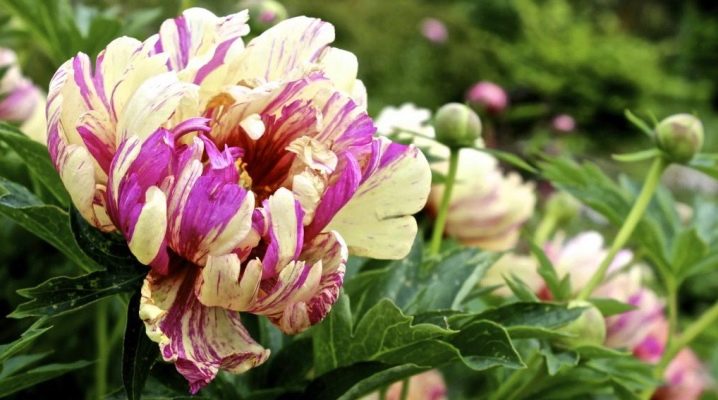
In nature, it is almost impossible to find yellow peonies, since they are a huge rarity. However, many breeders have been breeding just such varieties for many years so that people can admire their unusual color.
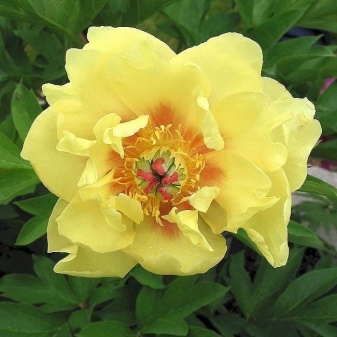
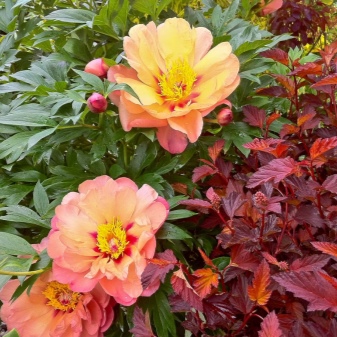
What it is?
Ito-peonies are a hybrid that was bred by crossing a tree-like peony with a lactic-flowered one. Initially, they have a semi-double shape, as well as common features of both types. One of the first results was achieved by a scientist from Japan Ito, after whom these beautiful hybrids were named. He took a special approach to plant breeding and achieved incredible success. After all, the bred peonies were distinguished not only by their beauty and unusual color, but also by thick leaves and long lush flowering.
These hybrids are considered the most elite among all garden peonies. Because they are different and endurance, and resistance to various diseases. However, despite all these features, they became popular only because of their yellow color.
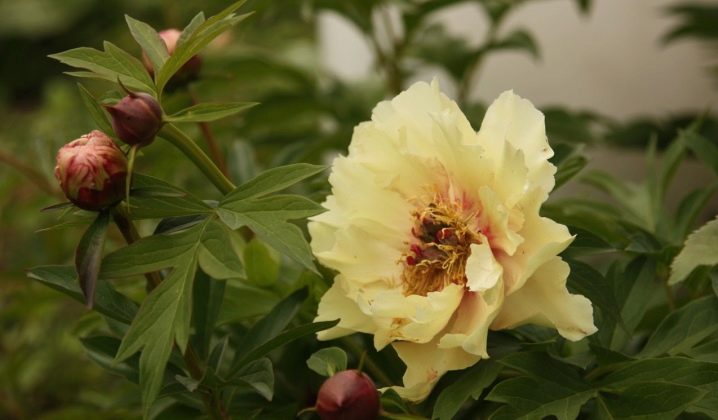
Description
These peonies are quite powerful and large bushes, which are distinguished by strong shoots. Their roots are spreading and are practically on the surface. Over time, they grow stiff and they grow strongly, so it will not be so easy to transplant them. The root system can reach up to 85 centimeters. The height of the bush sometimes reaches 85 centimeters. But despite this, shoots only bend under the weight of the peonies, but do not lie on the ground.
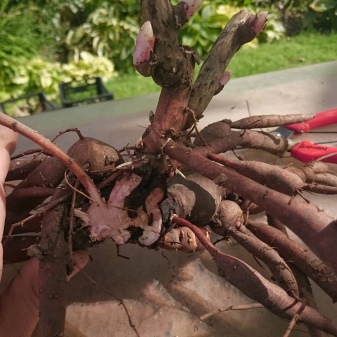
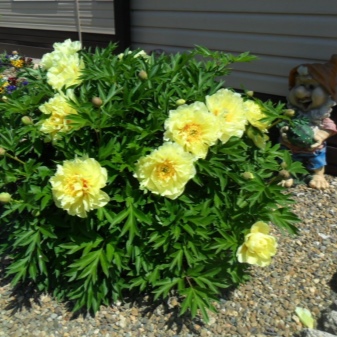
The leaves are similar to those of tree-like peonies - the same carved. In addition, they are more like a green pillow, which can last until the very frost. Their color changes by autumn only in a few varieties.
Flowers of Ito-peonies are also placed at the very tops of young shoots. These are large, up to 16-19 centimeters in circumference, picturesque flowers. They have wavy petals with very graceful patterns. Unopened buds are a bit like chestnuts in shape. Blooming flowers are distinguished by a large number of petals, which have several spots at their base.
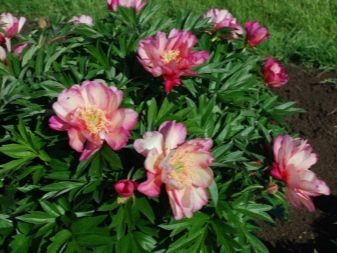

The shades of these hybrids are quite diverse. They can be too bright yellow to light golden in color. Very often they have several transitions from one color to another. Almost all flowers have a tendency to fade, so as they bloom, the petals become paler.
Besides, all hybrids are characterized by instability of shades. One and the same variety in different years can bloom completely differently. Thanks to this feature, the Ito-peony variety was bred. "Chameleon". Some late species begin to bloom after most of the peonies have bloomed and lasts almost a month.
However, there are those in which the appearance of buds begins in April.
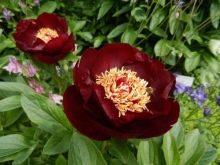
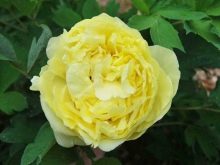

Varieties
A large number of varieties of Ito-pions were bred with completely different names, for example, "Scramdidliapshes" or "Fest Erraival". Among them, the best should be noted. Most of them tolerate frost perfectly, so they are great for the Moscow region.
Hillary
This variety is distinguished by large double flowers that reach 18 centimeters in circumference. At the beginning of flowering, their shade is bright pink, and after that it becomes lighter every day and acquires a pale pink color, which seems yellow from afar.In the very center you can see a cherry "eye". Flowers most often bloom alone and during this time they can change their color several times.
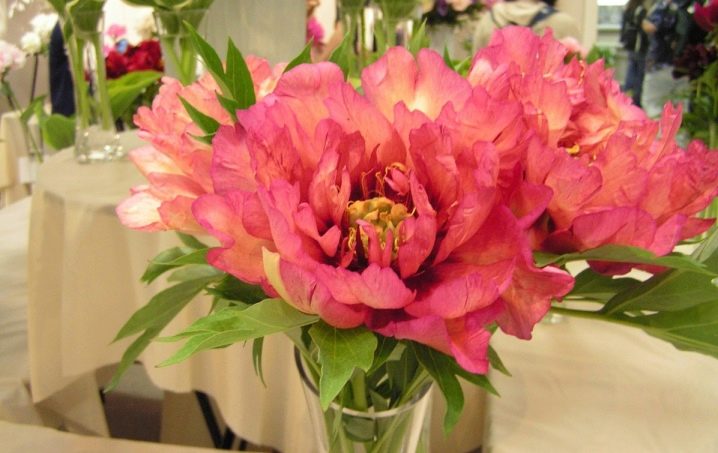
"Lollipop"
This hybrid peony gets its name from its strong resemblance to this multi-colored lollipop. It is distinguished by pale yellow flowers. Their petals all over their surface have small specks of purple and red. The bush is quite large, can grow up to 85 centimeters in height. Besides, he can simultaneously give several lateral flowers at once.
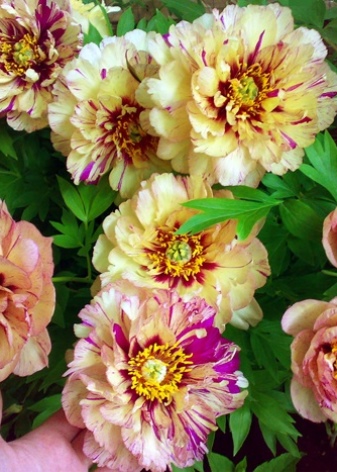
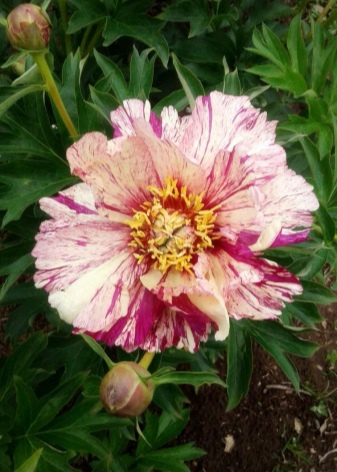
Scarlet Haven
This is a rather rare and even, one might say, unique variety of peonies, which consists of several rows of bright red petals at once, characterized by velvety. In the very center of the flower there is a ring of yellow stamens, too short. In circumference, they reach 14 centimeters. The Ito-peony bush is quite lush and grows up to 75 centimeters in height. Its foliage is too dense and completely covers all the stems. Only flowers are visible.
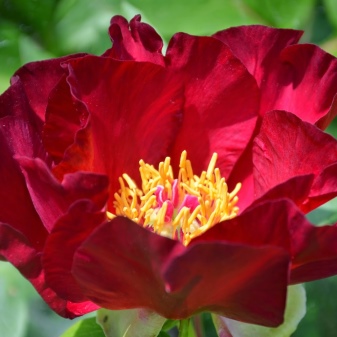
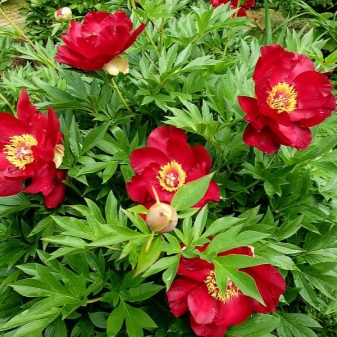
"Barcella"
This is the earliest peony, its flowering begins in April and lasts a whole month. The flowers of this beautiful plant are lush with a rather bright yellow color, as well as with small touches of red at the very base. Their diameter reaches 24 centimeters, moreover, they bloom one by one. In addition, they exude a very tasty aroma, and stand for a long time after cutting. The bush grows in height up to 85 centimeters, but its width is much larger.
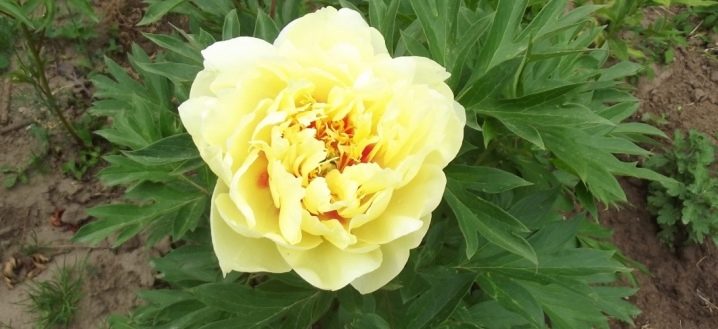
Kellis Memorial
Gardeners expect these pale yellow peonies to bloom in May. It can last almost a whole month. The edges of their petals are pale pink, and at the very base - bright cherry. When it completely blooms, it immediately becomes flat. At the same time, its circumference reaches 20 centimeters. The bush grows up to one meter in height. Its decorative leaves can delight everyone until frost, therefore, with their help, they often decorate personal plots.
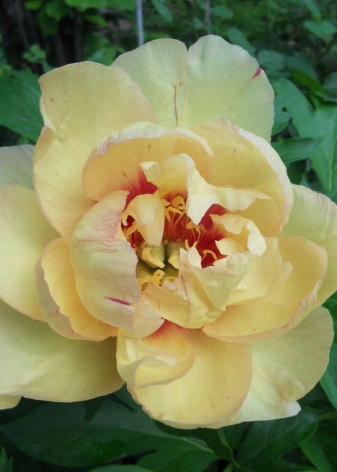
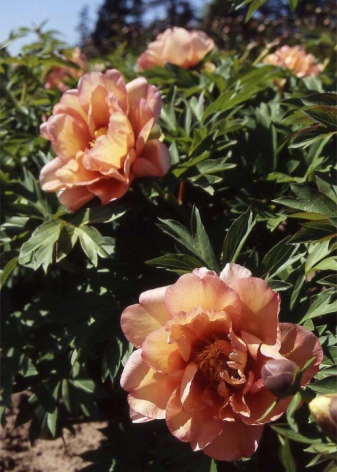
"Pastel splendor"
Very often this variety is also called pastel splendor. And this is because its flowers have an unusual color - a mixture of lavender, pink, pale yellow, and also cream flowers. In addition, in the very center of the flower, the peony has a small purple speck.
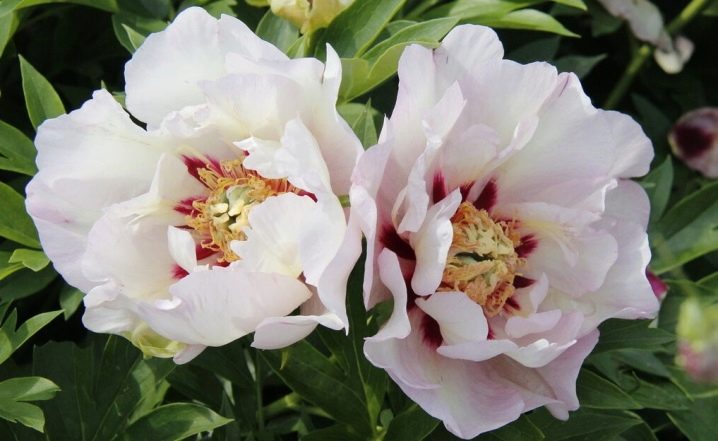
"Yellow Crown"
These lush peonies are distinguished by a very bright yellow color, but their middle is orange, almost red. Their circumference is not so great, only up to 12 centimeters. The height of the bush is up to one meter, in addition, its stems are quite dense and during flowering, they practically do not sink to the ground. Flowering begins in early May and lasts for three weeks.
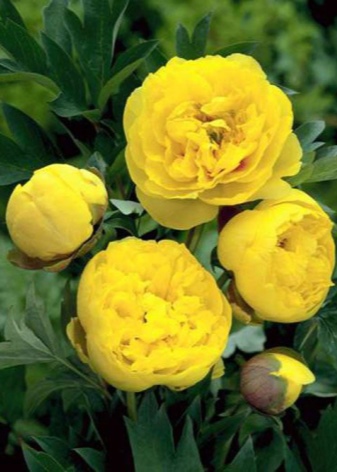

"Moning Lilac"
The peony has a semi-double shape with beautiful lilac flowers that have cherry and white stripes. Its leaves are pale green in color. In addition, this variety is different fairly early flowering times.
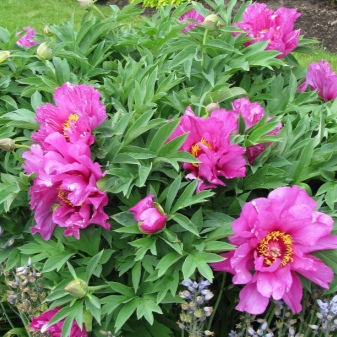
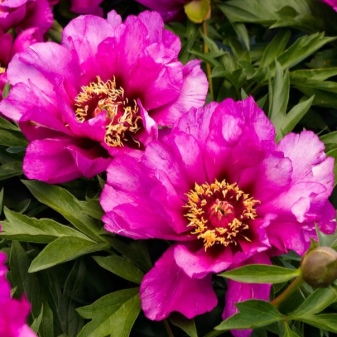
"Oriental Gold"
There is a debate about this plant among many botanists. Scientists are trying to understand which of the groups they can be attributed to. They are semi-double flowers with a straw color. They are very small in diameter, up to 10 centimeters. The bush grows up to 85 centimeters in height. Flowering begins quite early, in mid-April.
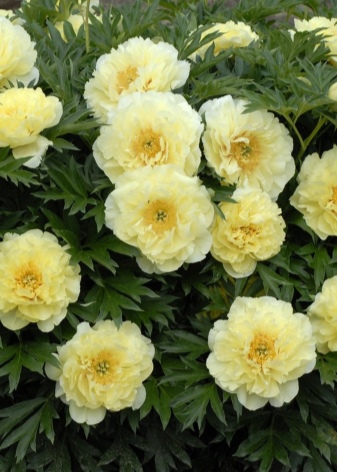
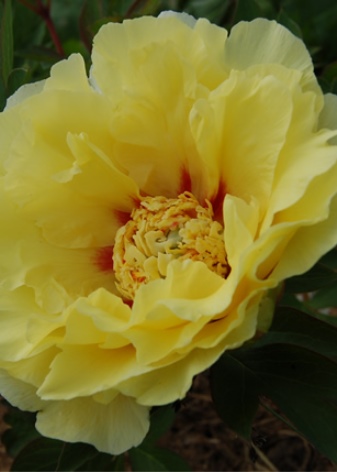
"Border charm"
This name is translated as "border of charm". After all, it is not a very tall bush, up to half a meter in height, while its width is also small. The buds in a circle reach 15 centimeters. Their color is yellow with a red border. Flowering occurs late.

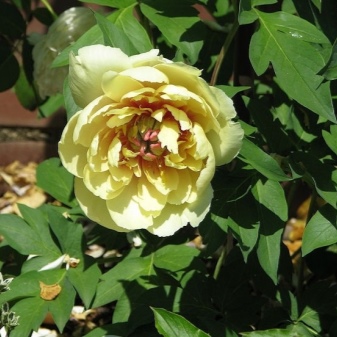
Copper kettle
This terry peony, due to the fact that it consists of a mixture of different shades of yellow, red and orange, seems copper from a distance. It exudes a very faint and delicate aroma. Flowering begins only after 3 years. This variety is resistant to frost, it can withstand up to -42 degrees.
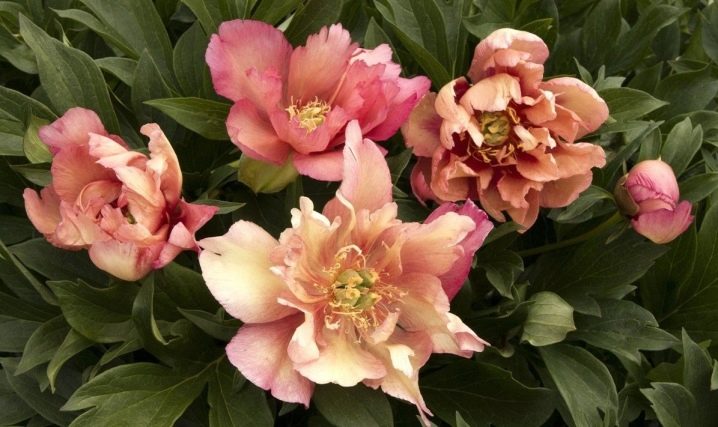
"Magic Mystery Tour"
This variety of peonies is distinguished by orange-peach flowers, which turn pale pink during flowering. Flowering lasts quite a long time, moreover, the bush can give up to 45 buds per season.

How to plant?
Before you start planting, you need to choose a place for these unusual beauties. Since a perennial plant actually exists on its own and does not require regular replanting, the place must be without drafts. In addition, the ground should not be too wet. Therefore, it is necessary to make sure that groundwater does not approach this place.
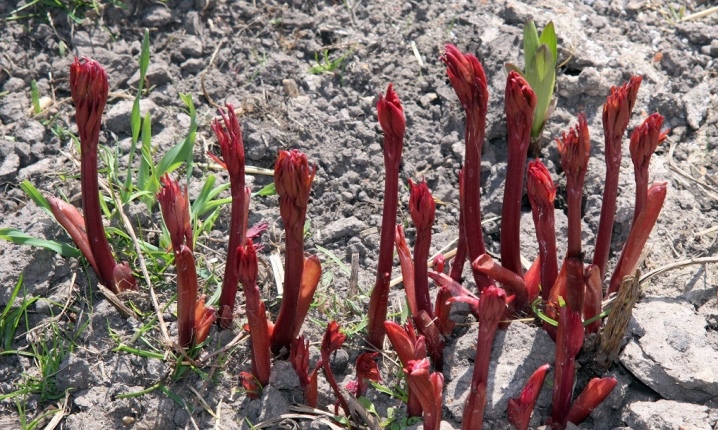
The soil at the planting sites should be loamy, with neutral acidity. If it does not meet the necessary standards, then you can add a little sand, peat and deciduous humus to it. Wood ash can be added if desired. Planting is carried out most often in late summer - early autumn.
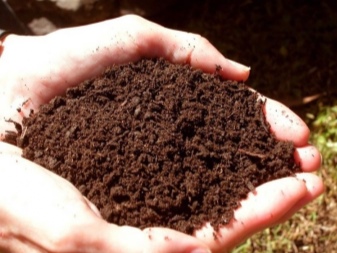

First you need to dig a large hole up to 60 centimeters in circumference, and it should also be the same depth. Then, broken brick or sand should be poured onto the very bottom, the layer should be at least 20 centimeters. Next, organic fertilizers are introduced in the form of humus or ash, and then everything is filled up to the middle with ordinary soil. In this state, the pit should be left for a week. After the time has elapsed, the earth will settle well, and you can immediately start planting.
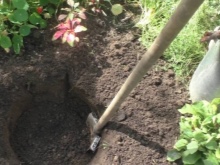


To do this, you need to place the root of the plant in a hole and sprinkle it with ordinary earth. After that, it must be carefully tamped. If the planting is done wrong, but deeper, then flowering can not wait.
Therefore, it is imperative that the growth point, which is on top, be at a depth of no more than three centimeters.
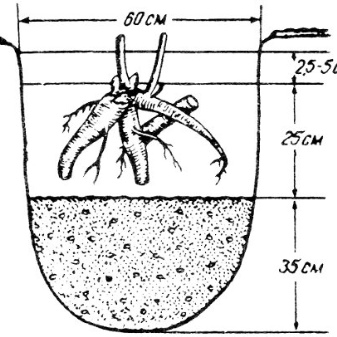
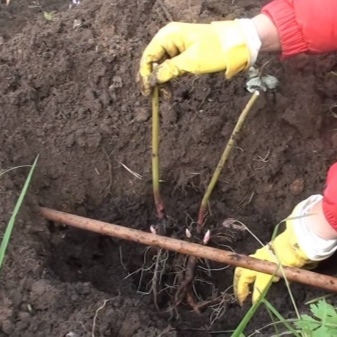
Care rules
After planting, it may happen that in the first year the bush looks lethargic. However, you should not worry about this, since its recovery takes a long time. In addition, in the first year, peonies do not bloom, but only in the second, and sometimes in the third year. However, there are varieties that continue to bloom even after transplanting.
In addition, one must remember that this plant does not like transplants at all. Therefore, this should not be done without special need.
It is best to replant the plant in the fall, and not in the spring, so that it can recover during the autumn-winter period.
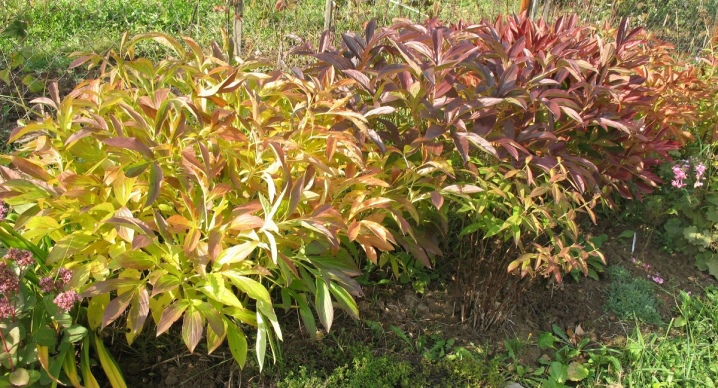
These plants do not require special care.... Since most of them are frost-resistant, there is no need to cover them for the winter period. This should be done only in cases where young seedlings were planted. Then they can be covered with moss or fallen leaves.

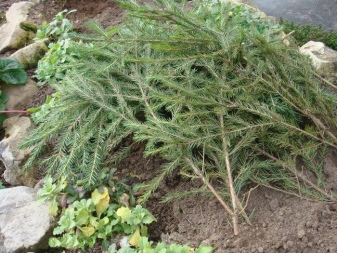
In addition, in the spring, they need regular watering. And also it is necessary to carry out weeding and timely feeding. In this case, it is necessary to fertilize in the early years by foliar method. It will be enough to do this 3 times per season. The first time in the spring, the second - before flowering and the third - at the end of August. In the fall, all stems must be cut off.

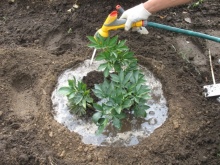
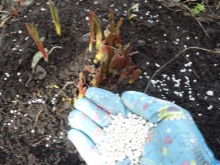
Reproduction
Ito-peonies can only be propagated by dividing the bush. If you use seeds for this, then the plants after germination will be completely different. They will lose their species characteristics.
You can divide the bush only 5 years after planting. Otherwise, the plant may simply die. This can be done both in spring and autumn.
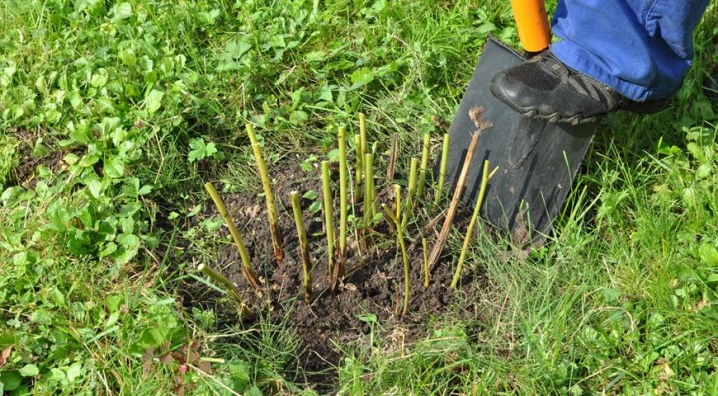
However, deciding to make reproduction in the spring, you must remember that after transplanting at this time, the plant begins to grow very quickly... Therefore, it will not be able to form a sufficient number of roots by the onset of the hot summer, which means it will not be able to provide itself with sufficient moisture. Therefore, in extreme heat, it is necessary to provide peonies not only with timely watering, but also to make a shelter from the scorching rays of the sun.
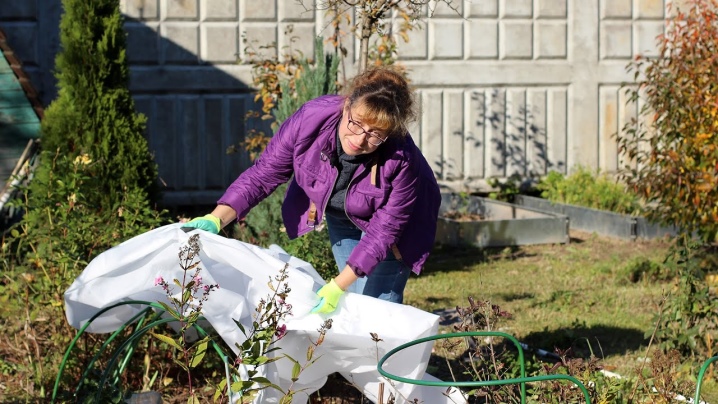
The autumn division of the root system will make it possible for it to get stronger already by the onset of winter, as well as increase the required number of roots, which can easily withstand the cold.It should be done in August or September.
To divide the roots, you need to cut the isthmus first, and then carefully divide the roots. In addition, you need to look so that they are not damaged. In order to cut the isthmus, a very sharp garden knife must be used. All roots should be approximately the same, up to 14 centimeters, and also have several buds. Only in this case the plant has the opportunity to take root.
Immediately after their separation, the roots should be sprayed with a fungicide solution in order to disinfect them in the future.



Having decided to start these unusually beautiful yellow hybrids on your personal plot or in the country, you must definitely familiarize yourself with caring for them, and also decide on the variety. After all, it will depend on this whether they will be able to settle down in a new place or not.
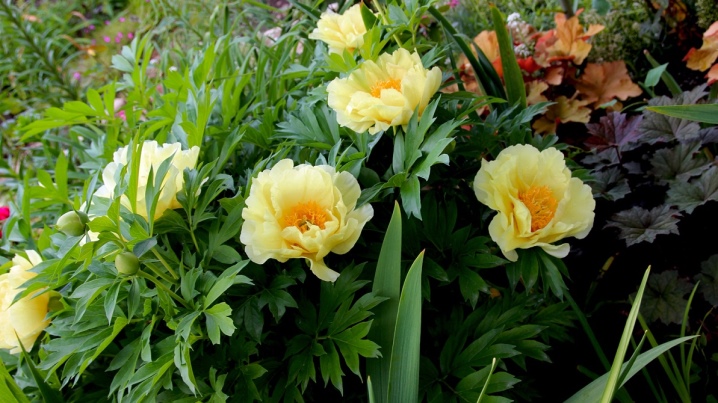
You can learn more about why ito-hybrids of peonies are better than tree varieties, how to properly care for them and how to plant them.







































































































The comment was sent successfully.